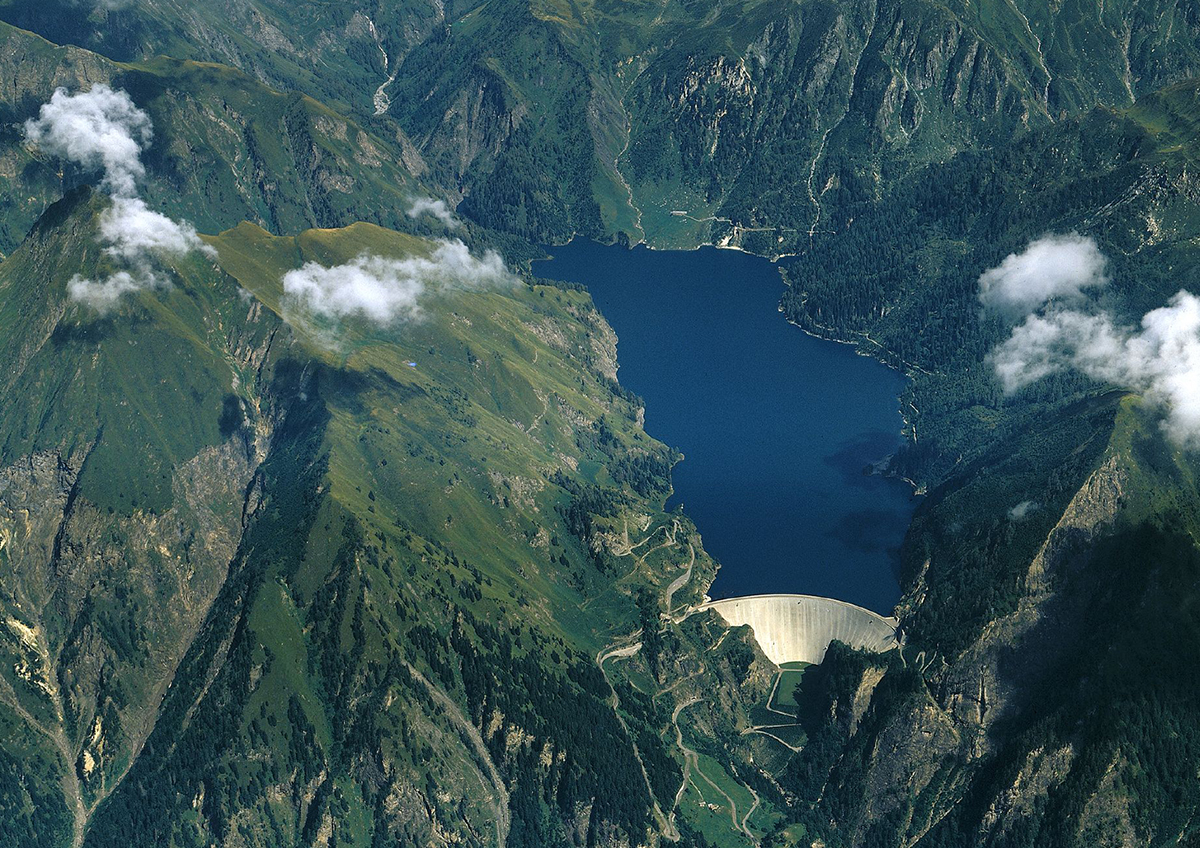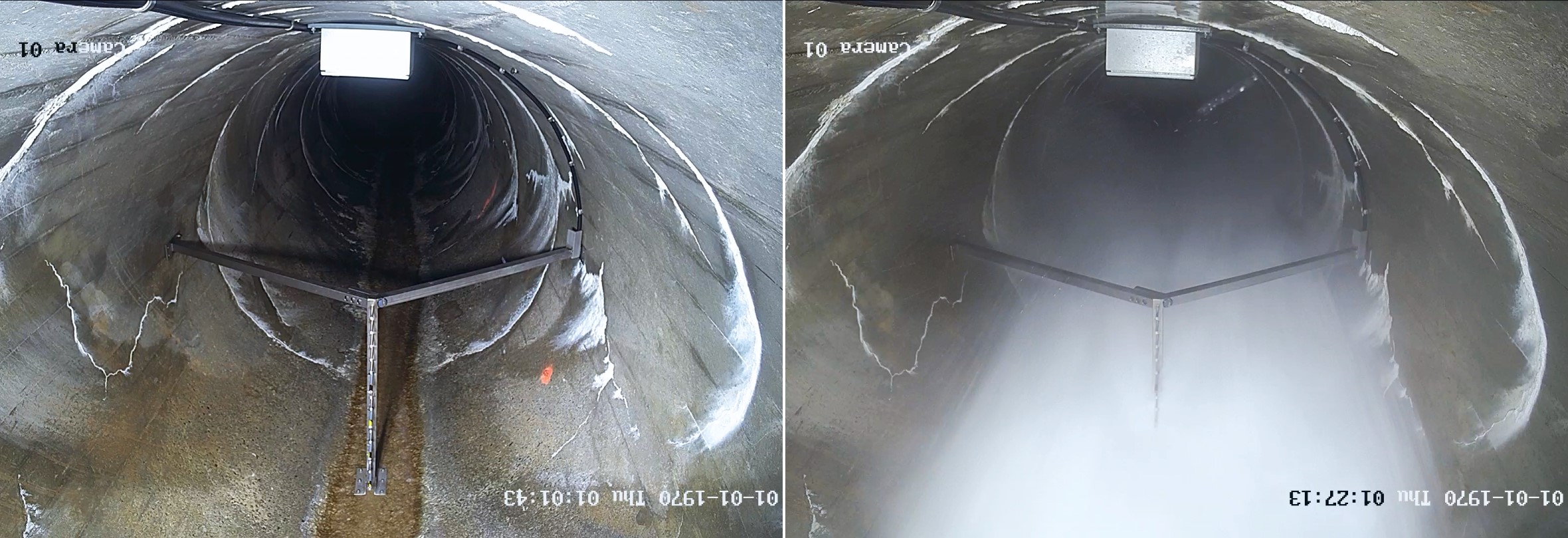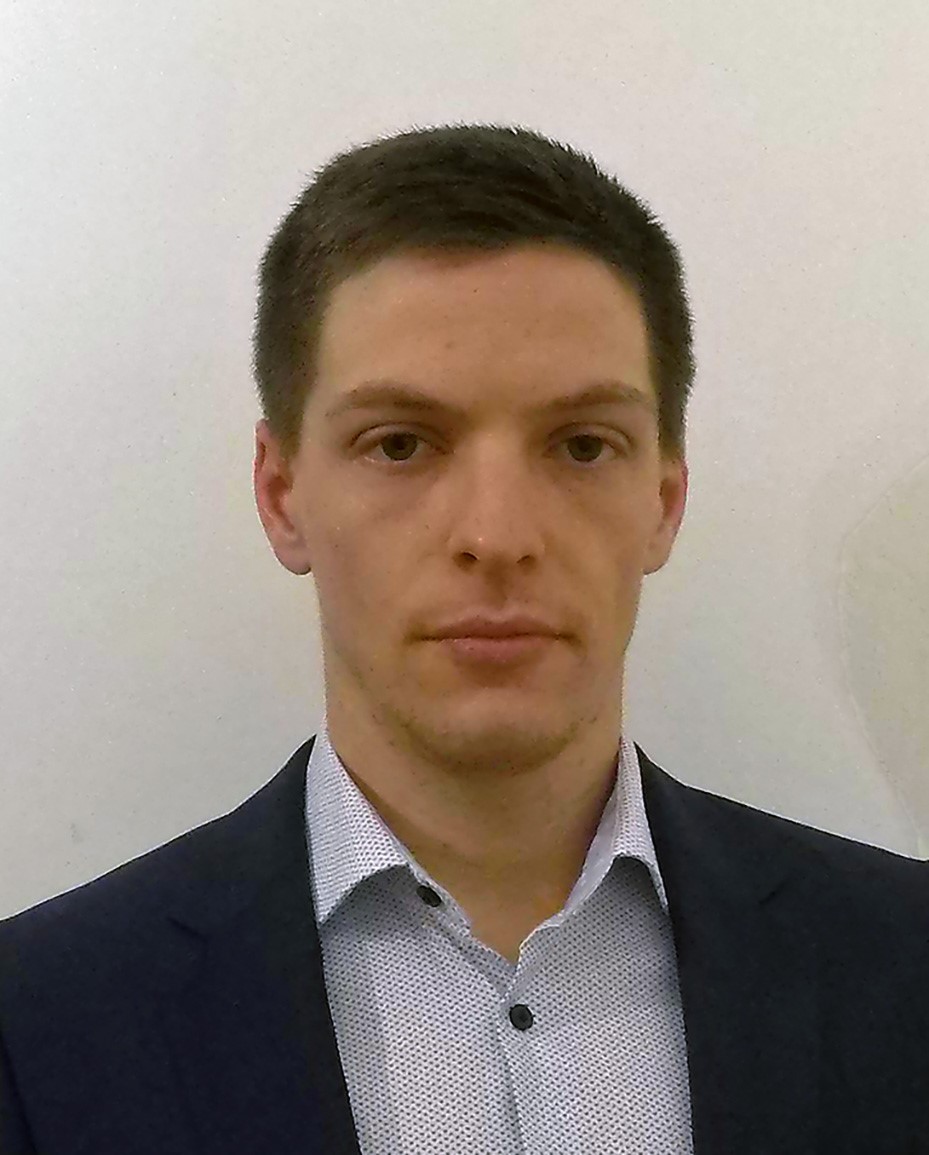Scale matters – providing the missing validation of air-water flow research in hydraulic infrastructures

May 2020 - by Dr. Benjamin Hohermuth and Prof. Dr. Robert Boes
High-velocity air-water flows commonly occur in human-made hydraulic infrastructures such as spillways and low-level outlets at reservoir dams. Air entrainment significantly affects the flow properties of the resulting water-air-mixture and must be considered in the design of these safety-relevant structures. However, existing design guidelines primarily take into account physical model tests, which may be subject to scale effects. An SCCER-SoE project at the Laboratory of Hydraulics, Hydrology and Glaciology (VAW) at ETH Zurich aims at providing prototype data necessary to assess the extent of these scale effects.
High-speed flows are common in safety-relevant hydraulic infrastructures such as spillways and low-level outlets of reservoir dams. Air entrainment is a typical flow feature caused by turbulent interactions at the air-water interface leading to a breakup of the free surface. This means that the usually smooth water surface dissolves into a mixture of air and water. The entrained air induces strong changes in the flow properties of the air-water mixture, which engineers must consider when designing hydraulic infrastructures.
Challenging scale effects
Experiments that measure high-speed air-water flows at prototype scale are challenging (e.g. due to access difficulties and high costs) and therefore scarce. Hence, science has been studying air-water flows mostly at laboratory-scale.
Laboratory-scale studies showed that scale effects influence several air-water flow properties such as the bubble and droplet size distribution. Consequently, an extrapolation of these properties to prototype dimensions might not be possible. Novel studies including prototype data from Swiss dams indicate that scale effects might also significantly affect key design parameters such as the air demand of low-level outlets. This demonstrates the clear need for detailed prototype data to validate existing physical and numerical modelling approaches. Therefore, this SCCER-SoE project at ETH Zurich aims at providing the missing validation of air-water flow research and at giving design recommendations by measuring air-water flow properties and air demand at prototype scale.
The setup to detect the effects
In spring 2019, researchers at VAW together with partners from the Water Research Laboratory of the University of New South Wales (Sydney, Australia) developed a two-phase flow instrumentation for measurements at prototype outlets and spillways. They installed this system in the Luzzone tunnel spillway in Ticino, Switzerland. The system is capable to measure air-water flow properties including flow velocity, air concentration and bubble or droplet sizes for conditions that prevail at up to ~40 m/s (see picture on the right side). In addition, they installed so-called Kiel probes and commercially available pressure sensors in the air vents of the middle and bottom outlets of the Luzzone dam to monitor air demand and pressure. The setup required the installation of several hundred meters of cables, which had to resist water velocities up to 45 m/s and air velocities of roughly 100 m/s.

Air-water flow instrumentation inside the Luzzone dam tunnel spillway before (left) and during (right) measurement of air-water flow properties at flow velocity of roughly 40 m/s. View in flow direction (Photos: B. Hohermuth, VAW).
Higher discharges and smaller droplets than at laboratory scale
In October 2019, the researchers conducted a measurement campaign during a sediment flushing event in which both the middle and the bottom outlets operated for several hours. The collected data for the air-water flow measurements covered water discharges up to 12.5 m3/s. The air demand measurements at the bottom outlet were even taken at water discharges of up to 36 m3/s at a pressure head of 221 metres (the elevation difference from the surface of the stored water to the outlet structure). Both discharge measurements significantly exceeded the values quantified in laboratory-scale conditions.
The preliminary analysis of the measurements indicates a good agreement with existing semi-empirical prediction equations for the entrained air distribution and the mean velocity. However, the data also indicates that the droplets are significantly smaller compared to laboratory-scale models. Smaller droplets enhance momentum transfer from water to air. This may explain the underestimation of air demand reported in previous studies. The researchers are planning a second test campaign for summer/autumn 2020 to further investigate this issue.
This study is an important step towards an improved understanding of scale effects for air-water flows. It confirms previous indications that scale significantly affects key parameters. Therefore, the study improves the process understanding of air-water flows and the design of safety-relevant hydraulic infrastructure such as spillways and low-level outlets.
Funding and acknowledgements
This project receives funding from the Swiss National Science Foundation (SNSF, SPARK CRSK-2_190684/1) and the SCCER-SoE. The authors thank the dam operator Ofible, especially Riccardo Radogna, for the cooperation during the installations and measurement campaigns. Dr. Stefan Felder (Water Research Laboratory of the University of New South Wales) provided expertise and assistance for the sensor design.
Authors

Benjamin Hohermuth studied environmental engineering at ETH Zurich and NTNU, Trondheim. After graduation in 2014, he worked as a research engineer in the river engineering group at VAW. In his doctoral research project from 2016 to 2019, he investigated the aeration and two-phase flow characteristic of low-level outlets using large-scale model tests as VAW.
In 2019, he joined SCCER-SoE as a part-time postdoctoral researcher. His main tasks include hydropower-related research projects and assisting in the coordination and administration of Work Package 2 on hydropower. His other research activities at VAW focus on high-velocity flows in hydraulic structures.
Robert Boes studied civil engineering at RWTH Aachen, the Ecole Nationale des Ponts et Chaussées in Paris and the Technical University Munich. After his diploma in 1996, he joined ETH Zurich’s VAW where he obtained a doctorate degree for his research on the hydraulics of stepped spillways in 2000. After a postdoctoral period at VAW, he joined the Civil Engineering Department of TIWAG-Tiroler Wasserkraft AG in Innsbruck, where he was in charge of interdisciplinary projects in the fields of hydraulic engineering, hydropower and flood protection. In 2007, he became head of the Dam Construction Group.
Since 2009, Robert Boes is Professor of Hydraulic Structures at ETH Zurich and Director of VAW. Robert Boes is involved as a consultant in dam and flood protection projects in Switzerland and abroad and is a board member of the Swiss Association of Water Resources Management, the Swiss Committee on Dams and the Energy Science Center at ETH Zurich. He is a steering committee member of the European Energy Research Alliance (EERA), Joint Programme Hydropower and Work Package Leader “Hydropower” in the SCCER-SoE.

